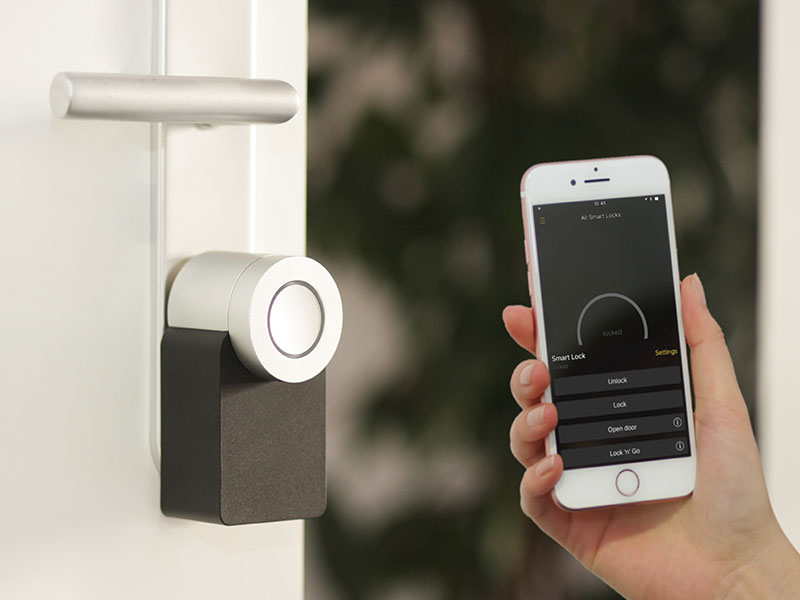Everything You Need to Know About Security Systems
 September 30, 2019 Blog 0 Comment
September 30, 2019 Blog 0 Comment As the name implies, a security system is a network of components that work harmoniously to protect one’s property and valuables. Security systems have become increasingly popular over the years because it serves as an effective deterrent for thieves and burglars. A typical security system consists of a wide variety of sensors, security cameras, a high-decibel siren, and a control panel that serves as the brain of the system.
If you’re interested in learning more about security systems, you’ve come to the right place. In here we’ll be discussing everything you need to know about security systems to help you make an informed decision.
How security systems work
The whole concept of security systems revolve around securing key access points in an establishment. This includes the front and back doors, windows, and other areas where a potential intruder may force their entry inside a property. Let’s take a look at how each component of a security system functions.
Control panel
The control panel is the command center of the security system where you can arm and disarm sensors, deactivate alarms, and input special passcodes to turn off the alarm. A touchpad interface makes programming and interaction much easier and voice commands allow for a touch-free navigation. If your security system is hooked to an alarm receiving centre (ARC), the control panel will communicate to the alarm monitoring company where they can contact the local police authorities to respond to your location immediately.
Door and window sensors
These devices are what make up the majority of your security system. Because there are numerous access points inside your property, there’s a good chance you’ll be using plenty of door and window sensors. Typically, these sensors use two components which are the reed switch and the magnet. These components form a closed circuit when in close proximity with each other. If the circuit breaks (i.e. when the window opens) the alarm will trigger.
Motion sensors
Motion sensors are used to protect a given space inside your property. Active motion sensors emit a laser from point A to point B and if an intruder walks past that laser, the alarm will sound off. These devices are perfect if you want to safeguard a large area inside your property like the living room, dining room, and the kitchen.
Surveillance cameras
Surveillance cameras are an integral component of a security system. The sight of these devices alone can make burglars think twice about breaking inside a property. Most surveillance cameras today are IP cameras that have a higher resolution than their analog CCTV counterparts. The superior image quality can make a world of difference when tracking down a criminal that’s been recorded on camera.
Analog CCTV cameras still play a role in today’s technologically advanced era. First off, they’re much more affordable and are fairly easy to install. The only downsides are it doesn’t have advanced features like video analytics and firmware updates to protect you from even the savviest of thieves.
High-decibel alarm
Home security alarms emit a loud, prolonged sound to notify both the homeowners and the surrounding neighbours of a break-in. Both an external and internal alarm is installed in the establishment to alert occupants that a criminal has forced entry inside their property. The alarm can be turned off by inputting a special passcode on the control panel.
How a security system can protect you during a break-in
Security systems facilitate a quick response in the event of a break-in. What your security system does during an intrusion will depend on which type is installed in your property.
Monitored security systems
As the name implies, monitored security systems are monitored by an alarm monitoring company. What this means is that the alarm company is alerted when there is a security breach in your property. A trained expert will attempt to communicate with you and verify if there’s been a safety breach (to avoid false alarm responses). This can happen in four ways:
- By using existing home phone lines (works even during a power outage)
- By using wireless cellular radio frequencies (also works during a power outage)
- VoIP or Voice over Internet Protocol (doesn’t work during a power outage
- Via the Internet (also doesn’t work during a power outage)
During the intrusion, the alarm monitoring company will notify the appropriate emergency response unit and send them over to your area. This includes policemen, firefighters, paramedics, and more. The monitoring company will attempt to maintain communication with you until help has arrived in your property.
Non-monitored systems
Non-monitored systems (also called DIY systems) aren’t hooked to an alarm monitoring center. The homeowner is responsible for installing all of the sensors, cameras, and motion detectors. While it does offer a bit of flexibility, you are left somewhat vulnerable in case of a break-in. A high-decibel alarm will sound off, but that’s all you’re going to get with a DIY system. Contacting the right emergency personnel is all up to the occupants inside the establishment (which can prove difficult in certain situations).
Depending on your security provider, you may or may not be able to receive notifications or text messages in the event of a break-in. If you’re not a tech expert, you can risk installing the sensors and devices the wrong way. This may leave certain access points susceptible to forced entry, which is why we recommend having a monitored alarm system instead.
Understanding how a security system works can go a long way towards helping you decide which type of security system is best for you and your establishment. Keep this in mind when shopping for a security system to provide your property with the level of protection it needs.
